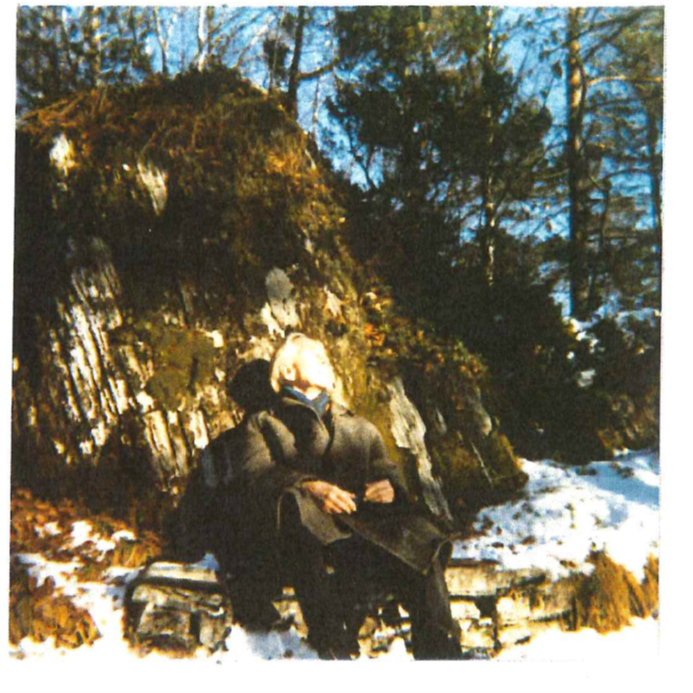En a/r/tograf krysser sine spor [An a/r/tographer crosses her paths]
Om utforsking, oppdagelse og gjenkjennelse i musikalske møter med den kunstbaserte forskningsmetodologien a/r/tografi [On exploration, discovery, and recognition in musical encounters with the arts-based research methodology of a/r/tography]
DOI:
https://doi.org/10.7577/ar.5639Keywords:
a/r/tography , Harald Sæverud, lecture recital, arts-based research, artistic form, music performance, Kjempeviseslåtten, Rondo Amoroso, SmåsveingangarAbstract
This essay invites readers to engage with the intersections of art, research, and teaching. It encourages exploration of how these elements can enrich both personal and professional life. This study is based on the author’s concert lecture in 2016, featuring the music of Harald Sæverud, viewed through an a/r/tographic lens. The text spans a period of more than fifty years, beginning with the enthusiasm of a twelve-year-old for Sæverud’s music. It then moves through letter writing, personal visits, concerts, and studies of his compositions. The author reflects on these encounters. Personal stories, correspondence, audio samples, and images are intricately woven together to bridge past experiences with present insights. This approach explores the intersections between the a/r/tographer’s various roles.
A/r/tography challenges the author to investigate the dynamic interplay among these identities. It offers a reflective journey through previous engagements with Sæverud’s music and their influence on the author’s artistic and pedagogical practices. The author also embraces the concept of “living as an a/r/tographer,” emphasizing the significance of the spaces between roles and the potential for creative exploration.
The essay raises questions about arts-based research and the importance of personal experience in scholarly research. It also considers the role that stories and memories play in shaping understanding. The essay draws on traditions of autoethnography as a means of reflecting on how personal history and artistic practice contribute to a broader discourse within arts-based research.
Photo: Siri Haukenes
References
Aksdal, B. & Nyhus, S. (1993). Fanitullen. Innføring i norsk og samisk folkemusikk. Universitetsforlaget.
Bateson, G. (1979). Mind and nature: A necessary unity. Bentan Books
Bech-Karlsen, J. (2003). Essayskriving for begynnere. Universitetsforlaget.
Bjerke, A. (1958). En midjesmal frue fra Grue. Cappelen.
Borgdorff, H. (2012). The Production of Knowledge in Artistic Research. I M. Biggs & H. Karlsson (Red.), The Routledge companion to research in the arts (s. 44–63).
Bourriaud, N. (2002/1998). Relational aesthetics. Les presses du réel.
Bresler, L. (2006). Toward Connectedness: Aesthetically Based Research. Studies in Art Education, 48(1), 52–69. https://doi.org/10.1080/00393541.2006.11650499
Deleuze, G. & Guattari, F. (2009). A thousand plateaus: Capitalism and schizophrenia (13th. print. utg.). University of Minnesota Press.
Eisner, E. W. (1993). Forms of Understanding and the Future of Educational Research. Educational Researcher, 22(7), 5–11. https://doi.org/10.2307/1176749
Goethe, J. W. von (1797). Hermann und Dorothea. Cotta Verlag.
Guldbrandsen, E. E. (2007). Innledning. Bruckners mørke mysterium. I Guldbrandsen E. E & Varkøy, Ø. (Red.): Musikk og mysterium. Cappelen akademisk forlag.
Gyldendal Norsk Forlag (1967). Harald Sæverud 1897–1967
Halås, C. T. & McGuirk, J. (2021). Det vitenskapelige essayet i profesjonsforskning: en kritisk utprøvende metode. Tidsskrift for psykisk helsearbeid, 18(1), 5–14. https://doi.org/10.18261/issn.1504-3010-2021-01-02
Hamsun, H (1949). På gjengrodde stier. Gyldendal Norsk Forlag.
Ibsen, H. (1969/1867). Peer Gynt. Gyldendals Studiefakler.
Ibsen, H. (1875). Digte. Gyldendal.
Karlsson, B. et al., (2021). Hva er autoetnografi? Cappelen Damm akademika.
Mørstad, E. (2025,07.05). Collage: I Store norske leksikon. https://snl.no/collage
Rasmussen, B. (2012). Kunsten å forske med kunsten. Et blikk på kunnen ut fra praksis-teori relasjonen. I R. G. Gjærum & B. Rasmussen (Red.), Forestilling, framføring, forskning. Metodologi i anvendt teaterforskning: Metodologi i anvendt teaterforskning (s. 23–49). Fagbokforlaget.
Sandemose, A. (1933). En flyktning krysser sitt spor. Tiden Norsk forlag.
Springgay, S., Irwin, R. L., Leggo, C., & Gouzouasis, P. (2008). Being with a/r/tography. SensePublishers. https://doi.org/10.1163/9789087903268
Sæverud, H. (1939). Lette stykker for klaver, op 14. Musikk-huset A/S.
Sæverud, H. (1942). Slåtter og Stev fra ‘Siljustøl’, opus 21. Musikk-huset A/S.
Sæverud, H. (1943). Slåtter og Stev fra ‘Siljustøl’, opus 22. Musikk-huset A/S.
Vist, T. (2015) Arts-based research in music education: General concepts and potential cases. I Georgii-Hemming, E. et.al., (Red.), Nordisk musikkpedagogisk forskning: Årbok 16 (259–292). Norges Musikkhøgskole.
Vist, T. (2017). Kunstbasert forskning i barnehagen: teori om en muslig praksis. I Berge, A. & Johansson, E.M. (Red.), Teori og praksis i barnehagevitenskapelig forskning (101–115). Universitetsforlaget.
Waage, P. N. (2018). André Bjerke: I kampens glede. En biografi. Aschehoug.

Downloads
Published
How to Cite
Issue
Section
License
Copyright (c) 2025 Siri Haukenes

This work is licensed under a Creative Commons Attribution 4.0 International License.
Authors who publish with this journal agree to the following terms:
- Authors retain copyright and grant the journal right of first publication with the work simultaneously licensed under a Creative Commons Attribution License that allows others to share the work with an acknowledgement of the work's authorship and initial publication in this journal.
- Authors are able to enter into separate, additional contractual arrangements for the non-exclusive distribution of the journal's published version of the work (e.g., post it to an institutional repository or publish it in a book), with an acknowledgement of its initial publication in this journal.
- Authors are permitted and encouraged to post their work online (e.g., in institutional repositories or on their website) prior to and during the submission process, as it can lead to productive exchanges, as well as earlier and greater citation of published work (See The Effect of Open Access).